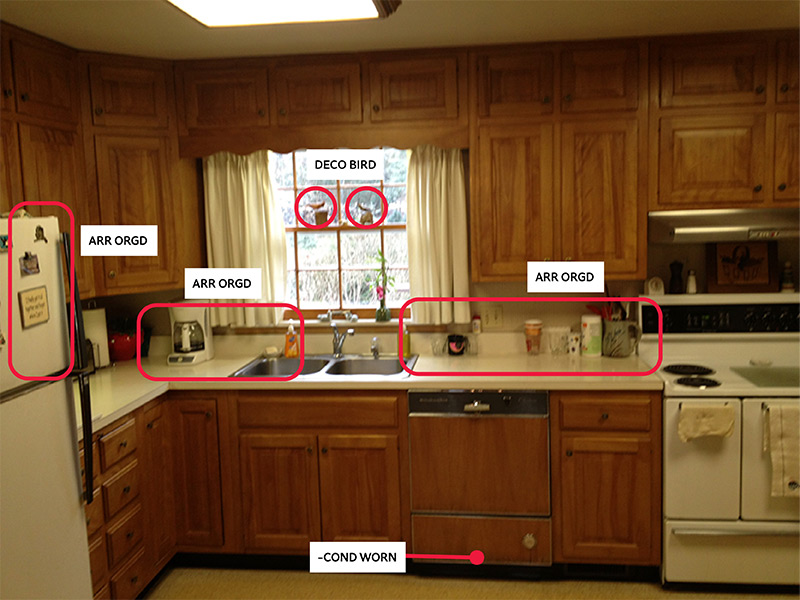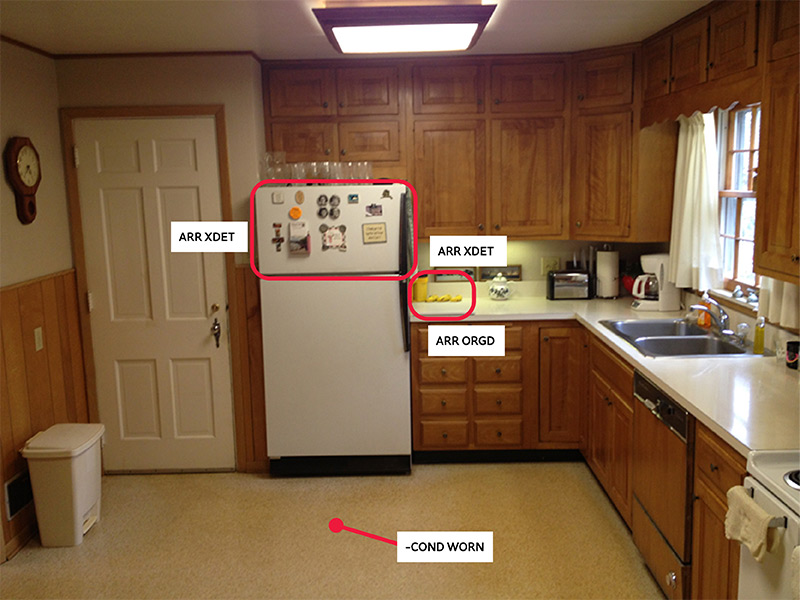
When recording field notes, it is imperative that details be recorded in as much detail as possible. Coding these recorded observations is when you will thank yourself for being super-detailed.
The images below are from a home in Oxford. The homeowners gave researchers permission to take photos in their homes to document their contents. When analyzing images, develop codes that create “handles” for observed content. Here’s this process in action:
Kitchen 1
- ARR: Arrangement (an arrangement of items positioned by homeowners)
- DECO: Decoration (a decorative item)
- ORGD: Organized (a clearly organized arrangement)
- BIRD: Bird (an image of a bird)

Kitchen 2
- ARR: Arrangement
- XDET: Extreme detail (an extremely detailed arrangement—bananas are in order!)

Bedroom 1
- -COND: Negative Condition (condition is not great)
- WORN: a worn area (condition of the area is worn due to seemingly normal wear and tear over a long period of time)

Bedroom 2
No new codes here, but do you see how homeowners put mints on top of the pillows in the guest room? How quaint!

If your team of researchers went into 10, 20, or 50 homes and conducted observations like these, you could find some fascinating trends that would point to cogent themes. For instance, the prevalence of observed Cardinal bird images in Ohio vs. Kentucky could suggest that Ohioans really love Cardinals (the state bird of Ohio, by the way). Repeated observations reveal what people value and coding is when those discoveries surface.
Resources
Be scrupulous when coding observations. It’s a skill developed with practice over time.
Pro Tip
Codes and trends don’t always reveal themselves on the first pass. Go through data more than once to affirm the codes you developed or determine if some were just outliers and should be ignored.